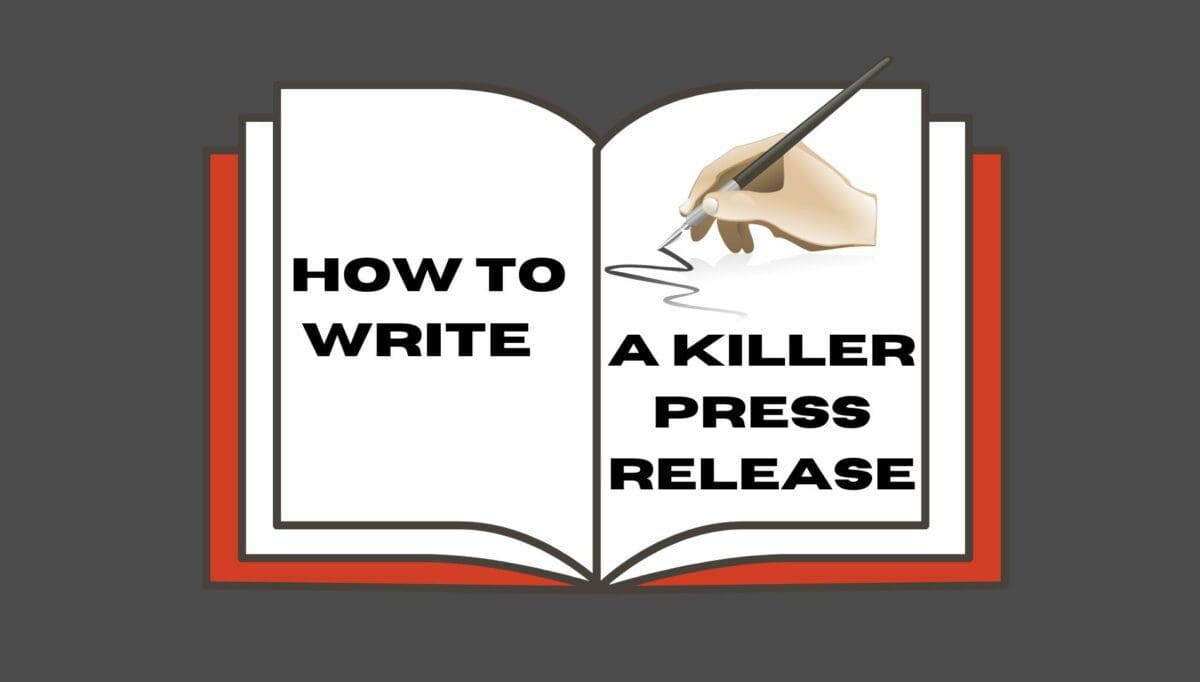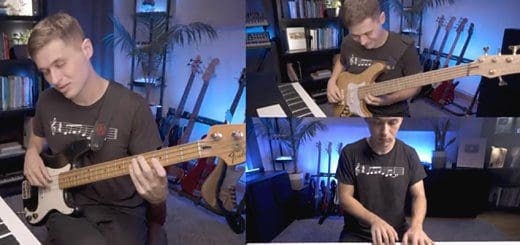By Tamarin Fountain
Breath control exercises are essential for singers looking to improve their singing technique. Every singer needs to practice vocal breathing exercises and techniques for vocal control if they want to be the best singer that they can be. Unfortunately, most singers don’t realise just how important breathing control exercises are.
Breath control exercises for singers require you to breathe from your diaphragm. Take deep breaths without raising your chest and shoulders and breathe slowly. This is the foundation for breathing control techniques and the capacity to hit high notes.
You can achieve control over your inhalations and exhalations that’ll make a huge difference to your vocals and performance. But first, you must learn how to do it. Let’s take a look at breath control exercises for singers that achieve the results you want.
What is breath control in singing?

Breath control is about using your diaphragm to fill your lungs with air and then gradually release it. Breath control exercises help you improve your lung capacity and power your high notes without losing too much breath on one note.
Great breath control is very important for developing your vocal range, quality of tone, ability to hold on to notes, but also for your rapping skills. As hip-hop becomes more popular in pop music, many top singers such as Ed Sheeran and Ariana Grande are incorporating rapping into their music. It’s not just big ballads that need sustained and strong support. Fast songs required a very specific technique to ensure you stay on top of every note and lyric.
How to improve breath control: Singing exercises
We’ll cover how breath control exercises for singing can make all the difference in helping you hit high notes and rap. Don’t expect to see results overnight. In this, you have to play the long game. Developing good breath control for singing will not only improve your vocals, but it’ll also make you healthier too.
Few of us breathe as fully and deeply as we should. Our bodies are designed to operate better when taking in more breath, filling and expanding the lungs like a balloon. However, it’s not just the inhalation that has a profound effect on the body.
Learning to achieve long, steady exhales has the added benefit of calming the sympathetic nervous system, the bit that controls the ‘fight or flight response’. Breathing acts as nature’s way of relieving anxiety and stress. And the ability to regulate nerves and pre-show anxiety is a great skill for a singer too.
This is particularly relevant for asthma sufferers where breath control can be tricky. Try out some of the breathing techniques for singers with asthma below, and see if it can help you better manage your singing. We have even heard from readers who use some of these techniques as yoga breathing exercises for singers.
Breath control techniques and exercises
So what are the best breathing exercises for singing, specifically?
Here we’ll work through some of the most helpful vocal exercises for breathing that you can practice at home to warm-up, work the diaphragm, reach high notes and take your singing exercises to an advanced level. We’ll also provide you with hints, tips and resources to find methods that work for you, your style of learning, the genre of music and your lifestyle.
Breathing exercises for singing: YouTube
If you prefer to watch instructional videos before trying something new, YouTube is always a great source of information and assistance.
Then if you enjoy their style you can work on a number of techniques with a familiar style of teaching – it also saves time hunting around for a new video each time you want to learn something fresh. Check out the number of views they have and how often they upload new videos, as this can be an indicator of popularity (which is likely linked to results and quality of content).
Breath control exercise instructions: Warm up
#1 Loosen up and relax your muscles
Give your face, neck and chest a good stretch. You need your muscles to be loose and relaxed before you can take in the breath correctly and hit high notes during your music scale.
Have a good yawn while you’re at it and keep your muscles warm. Tense up every single muscle in your body for a count of five, then let everything go completely. It should leave you feeling more relaxed than before.
This sense of relaxation will help your breathing technique, which we’ll get on to next.
#2 Breathe from your diaphragm
Locate your diaphragm above your stomach, place your hand on it and pull your breath from here. Breathing from your diaphragm is the best way for you to be breathing as a singer. High notes typically require more breath and power and your diaphragm is the best source for it.
Count up to 5 on the inward breath, then breathe out for 5. Really concentrate on the movement in this area of the body. If that’s easy, increase the count and repeat. See how high on the count you can go. It should build over time.
Your breathing exercises should start much lower down with your stomach & diaphragm muscles expanding like bellows. If your stomach goes in when you breathe in, you’re doing it the wrong way round!
#3 Keep your shoulders down
Relax your shoulders and keep them back as you breathe. When you take a deep breath, it can be tempting to raise up your body and this is especially the case with your shoulders. This will make it more difficult to breathe from your diaphragm so if you want those high notes then keep them down.
Make sure your shoulders are not rising when you take a breath. If they are this indicates shallow breathing & will result in too much air pressure onto your vocal cords. You’ll likely get an initial blast of volume followed by very little else as your breath and therefore your voice quickly runs out. The cycle will then continue and become very hard work.
Ask someone else to hold your shoulders down gently as you breathe. Having a little resistance will help make you aware when you are lifting them. You could also use a mirror to keep an eye on them and watch where the movement is happening in the body.
#4 Breathe in deeply
Keep your shoulders down and take a huge breath. Now that you’re breathing through your diaphragm, take in as much as you possibly can. Your lung capacity should improve the more you practice so try measuring how long you can breathe in for to see if you get better.
Breathing exercises for singing high notes
#5 Breathe out slowly
Let your breath out slowly. Letting all your breath out in one go won’t help you control it and help train your diaphragm to stay in control of your breathing. This will stop you from letting all of your air out when you try and hit high notes.
Breath control is harder on the out breath than the inhalation. So don’t worry if it first you struggle to keep it slower. It’s just a matter of time and very regular practice.
#6 Stay hydrated
Drink plenty of water. This is important not only for singing but for your general day to day life. Whether your singing or talking, you are likely to be using your larynx and vocal cords a lot during any given day. The more you use it, the more hydration you’ll need. Just make sure you aren’t drinking cold water as this can make your larynx tenser.
#7 Warm-up your vocal cords
Practice warm-ups that push your range. Breathing exercises are incredibly important for warming up but you need to practice singing scales to understand where your range is at. Once you know how high you can sing, make sure you practice making those high notes comfortable before pushing yourself to go higher.

#8 Try breathing exercises while lying down
Lie on the floor, relax and breathe normally. You should notice as you breathe in your stomach and rib cage rise (inflate) and as you breathe out they get smaller again (deflate). This helps to feel you breathe into the back of the diaphragm, as you feel resistance against the floor. It’s a great start for your diaphragm exercises for voice.
#9 Do shorter breathing exercises
Practice doing short mini laughs with a breath in between. For example, “Ha” breathe “Ha” breathe “Ha”. On every “Ha” make sure the stomach is going in and on the breath going back out. This is especially good for rappers who won’t have the time to take longer breaths while performing.
Advanced breathing exercises for singers
#10 Slow it down
Practice songs in slow motion. This will help to develop control with your air pressure & flow. While carrying out this breath control technique, think of squeezing a tube of toothpaste from the bottom up to keep that steady flow. If you practice more slowly, it will prevent you from rushing your words to get them out on your breath.
This can affect the timing of your singing and the audience will notice this. They will also be able to tell if you’re singing too quickly so try practising to a metronome at a slower bpm.
#11 Physical exercise
Now you’re getting serious in finding advanced breathing exercises for singers. Do some exercise to increase your stamina and lung capacity. We aren’t talking scales. but If you sing fast songs, try something that gets your heart going like running – this forces you to take quick big breaths to keep you going. If your style is a more sustained sound, with slower numbers, try a discipline like pilates, Tai Chi or yoga, which encourage longer more drawn out methods of breath control.
Also, if your aim is to be playing massive sets on big stages then it is going to require a high level of fitness. A great example is Anthony Kiedis from Red Hot Chili Peppers. He is a very keen runner and goes running before every show he plays. This is especially vital if you dance while singing.
Dancing requires a huge amount of stamina and extra breath control, to avoid losing musical quality in the process. Dance training, like running, is great for developing the kind of breath control techniques you need for high energy performances. Just be careful you’re not snatching those breaths high up in the body, but remember to keep the breath low, into the ribs, belly and diaphragm.
Breathing exercises for singing: PDF resources

If you prefer to work with a written selection of exercises, you could print off the ones listed here and elsewhere in our ‘how to’ articles.
Or you could access some downloadable breathing exercises for singing, PDF sheets. The BBC provides a simple guide from renowned popular choirmaster Gareth Malone. It also has links to audio and video clips as optional extras.
Here are some additional breathing exercises for singers in PDF, that you might like to try these:
- Vocal Training – Breathing Exercises for Singing
- Breathing Basics for Singing
- Breathing Exercises for Singing
How can I improve my breathing control?
Singing is essentially the sound made by the vibrations of your vocal cords. These vibrations are caused not only by the muscles but also by the air that moves through them. The less air you have, the more strain you end up putting on your muscles to create the sound.
This could potentially damage your voice and isn’t sustainable for singers in the long term. This is especially true for anyone singing high notes. We naturally tend to use more air with high notes so if you don’t breathe properly, the high notes will put even more strain on your voice. Focusing on your breathing will make sure that you have the capacity for high notes and maintain a healthy voice.
Breathing exercises for singing: breath control
Why do singers need to perform breathing exercises? As a singer, maintaining the health and accuracy of your voice is paramount. The following breath control exercises can help you to keep your voice both strong and healthy.
You’ll need breathing exercises for a good warm-up and for whenever you perform. If you lose your breath and stop singing, you risk ruining your reputation. Many people with breathing problems use voice lessons as a way of improving the issue, but there are some more breathing exercises and techniques which you can try yourself at home.
Breathing exercises for singing
One of the most important parts of learning how to sing is learning how to breathe correctly. Breathing exercises are very important to singers as they help improve breath control and can help keep your voice strong.
Many breathing issues that singers encounter, such as running out of breath before the end of phrases, are often down to the internal muscles (the vocal cords & larynx) not being used correctly. However, it is really important to regularly do breathing exercises as a singer.
Breath control for rapping

Unlike hitting high notes, which could use one breath on a single word or run, rapping and fast singing or speak-singing, requires an ability to get many words out in one breath.
Whilst the same fundamentals of breathing with your diaphragm is required, you also need to focus more on diction and stamina. You could end up rapping more words in a single verse than other singers do in a whole EP and this will require a lot of breath.
How to breathe while singing a fast song
If you’ve written lyrics for rapping then you need to stay on top of when you’re going to breathe. If you try writing breaths into your lyrics then this will help you power your words and maintain your timing.
Do you need to perform breath control exercises for singers daily?
Not necessarily! Many singers fall into the trap that they must do endless breath control exercises in order to sing well but this shouldn’t be the case.
Many of the breathing issues that singers encounter, such as running out of breath before the end of phrases, are more often down to the internal muscles (the vocal cords & larynx) being made to function incorrectly.
It’s also affected by how the airflow is distributed rather than incorrect breathing function.
It is however really important to get the basics right.
Breath control: singing high notes with vocal breathing exercises

Singing high notes can be an ultimate display of your range and vocal ability. However, attempting to hit these notes can often be the downfall of a singer. Missing the note can be painful to hear and it can also be a damaging strain on a singer’s voice as well.
Whether you’re using your chest voice or falsetto, you need breath control for singing high notes. More specifically, it’s not how much you breathe, but how you breathe that will help you hit high notes.
High notes in chest voice
Singing high notes with your chest voice is probably the most powerful way to hit the higher notes. This requires a lot more focus on breathing with your diaphragm and keeping your shoulders back and low. This is because you don’t want to move up into your head voice or falsetto so you have to have strong control of your diaphragm. Think of the breath as being a pillow, on which the notes can sit. The visualisation will help with hitting those notes.
High notes in falsetto
An alternative way to hit high notes is to use falsetto. This mainly applies to male singers that are looking to sing higher than the range of their chest or mixed head voice. Falsetto requires a significant amount of breath control training because it requires more air. It can also be more strain on your vocal cords so keep practising your breathing exercises to help prevent this, and ensure you have studied the techniques required to achieve a proper falsetto.
How do you breathe when singing high notes
Singing high notes can be an ultimate display of your range and vocal ability. However, attempting to hit these notes can often be the downfall of a singer. Missing the note can be painful to hear and it can also be a damaging strain on a singer’s voice as well.
Whether you’re using your chest voice or falsetto, breath control is incredibly important. More specifically, it’s not how much you breathe, but how you breathe that will help you hit high notes.
High notes in chest voice
Singing high notes with your chest voice is probably the most powerful way to hit the higher notes. This requires a lot more focus on breathing with your diaphragm and keeping your shoulders back and low. This is because you don’t want to move up into your head voice or falsetto so you have to have strong control of your diaphragm.
High notes in falsetto
An alternative way to hit high notes is to use falsetto. This mainly applies to male singers that are looking to sing higher than the range of their chest or mixed head voice. Falsetto requires a significant amount of breath control training because it requires more air. It can also be more strain on your vocal cords so keep practising your breathing exercises to help prevent this.
Breathing techniques for singing and stress
Let’s be honest, trying to make a career in the music industry can be pretty stressful. Even getting up on stage can bring a lot of anxiety for many performers.
Breathing exercises are highly recommended for reducing stress and anxiety so there are plenty of benefits beyond singing.
Exercises for breath control also help combat insomnia and lead to better overall health, all of which will contribute to you being a better performer.
If you find yourself getting nervous or stressed before a show, take 2 or 3 minutes to find a quiet spot and breathe slowly and deeply, counting in and out.
Not only will it help your voice for singing but it should help calm your nerves.
It’s clear that breath control exercises for singers offer a route to improved and safer vocals. Even if you’ve been singing for ages without using any, now is the time to build them into your practice and experience the benefits.
Related Questions
Why do I run out of breath when singing?
This is due to a combination of shallow breaths taken too high in the body and lack of control in the way you’re releasing the air you have taken in, causing it to rush out. The vocal cords should resist the air coming out, but not in a way that produces any tension – this is where control counts.
Which exercise discipline uses lateral thoracic breathing?
The top exercise discipline that uses lateral thoracic breathing is pilates. Some yoga instructors also incorporate it into certain types of class and swimming can encourage it too. Learn to breathe in this way and use it regularly to increase your lung capacity and control the breath effectively.
How can I improve my breathing control?
Practice the exercises listed here, via a YouTube coach, or a singing teacher. Little and often works well. Basic breath control techniques can be done anywhere, anytime, making it a convenient way to work your vocals. Expect it to be at least a few weeks before you start to notice a difference.
Let us know our best diaphragm exercises for voice and breath control exercises for singers in the comments below!










